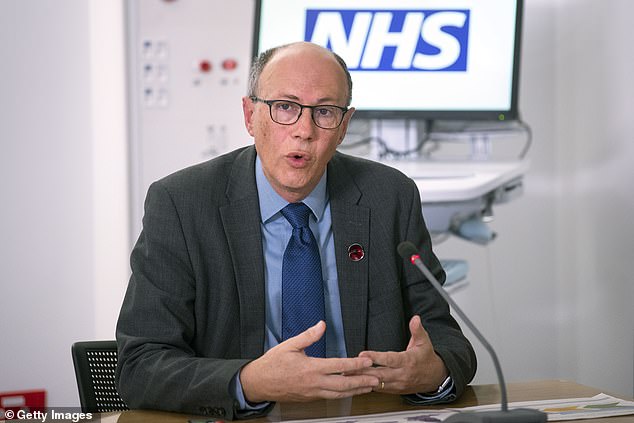The NHS has raised concerns about a surprising rise in strokes among people aged 50.
The number of people between 50 and 59 years old suffering from this potentially fatal disease has increased by 55 percent in the last 20 years.
Some 12,533 Britons in this age group suffered a stroke (where the blood supply to the brain is cut off) in 2023/24, compared to 8,063 in 2004/05.
This comes as the total number of people admitted to hospital after a stroke has increased by 28 per cent since 2004.
NHS England data shows there were 111,137 admissions in 2023/24, up from 87,069 two decades earlier.
This increase has been driven in part by both an aging population and the impact of unhealthy lifestyles on the country’s cardiovascular health.
The number of strokes also increased by 42 percent among people ages 60 to 69, and 25 percent among people ages 70 to 79.
The NHS has raised concerns about a surprising rise in strokes among people aged 50. Health Secretary Wes Streeting (pictured) said of the latest NHS analysis: “These figures are shocking, and even more so when you consider that the causes of stroke are largely preventable, such as high blood pressure and a poor diet.
Professor Sir Stephen Powis, national medical director of the NHS, said the figures show that strokes are “not just a risk for older people” and that everyone should be aware of the symptoms.
The NHS is promoting its ‘Act FAST’ campaign this week, which hopes to inform the public about the signs of a stroke.
The acronym FAST means: people should be on the lookout for a drooping ‘face’; inability to lift one “arm”; slurred or strange ‘speech’; And if you spot these symptoms, know that it’s “time” to call 999.
An accompanying television advertisement features examples of victims showing symptoms of a stroke, including a man who struggles to smile, a decorator who cannot lift his paintbrush and a grandmother who struggles to read a bedtime story.
Without prompt treatment, a stroke can lead to death or disability, such as paralysis, memory loss, and communication problems.
Experts said the increase in hospital admissions for stroke among people in their 50s could be associated with a variety of factors, from better screening and information to obesity, poor diet, high blood pressure and lack of exercise. .
Professor Powis added: “We know that lifestyle (factors)… can increase the risk of stroke and have a significant impact on the cardiovascular health of working-age people in their fifties and sixties.”

Professor Sir Stephen Powis, national medical director of the NHS (pictured), said the figures show that strokes are “not just a risk for older people” and that everyone should be aware of the symptoms.
With 38,000 stroke-related deaths in the UK each year, it is the fourth leading cause of death, although the survival rate is increasing.
In recent years, NHS teams have rolled out new ways to identify people with the main risk factors for stroke, including pharmacy blood pressure checks for over-40s, free blood pressure monitors available for 220,000 people at higher risk and a rapid launch. without anticoagulant medications.
Health Secretary Wes Streeting said of the latest NHS analysis: “These figures are shocking, and even more so given that the causes of stroke are largely preventable, such as high blood pressure and poor diet. “.
‘Prevention will always be better than cure.
“Not only because it means helping people live well longer, but also because a healthy workforce also supports our mission of growth.”


